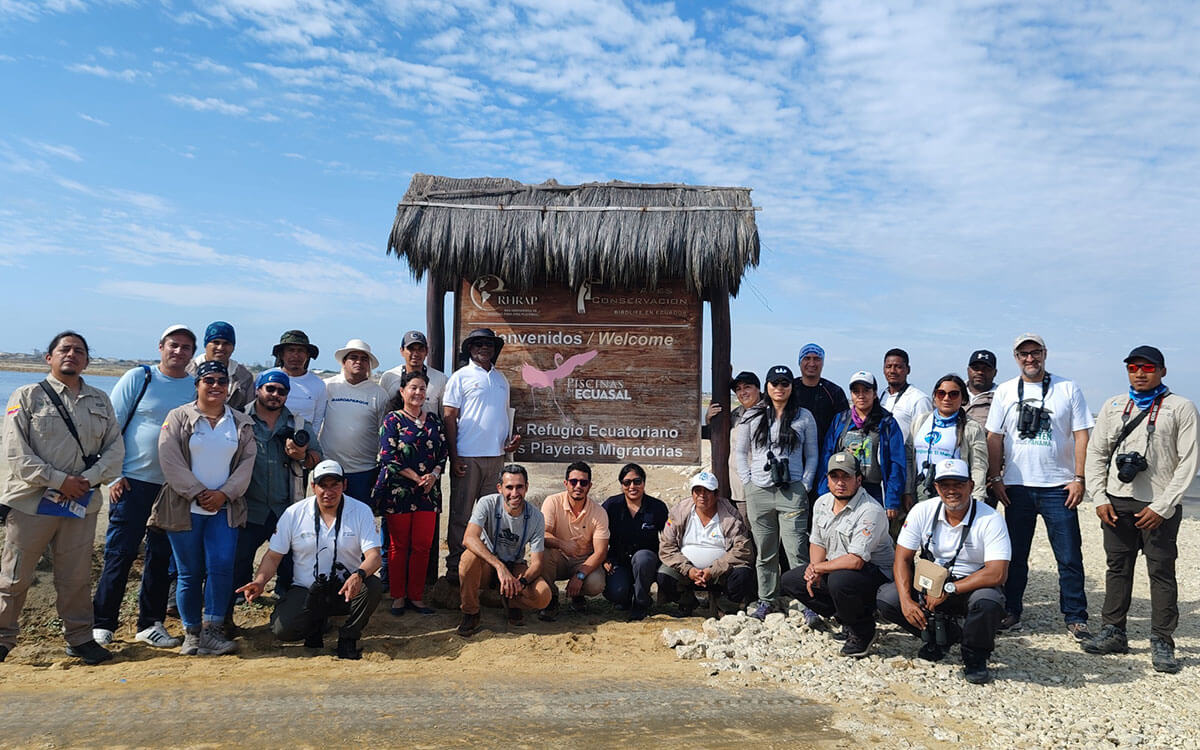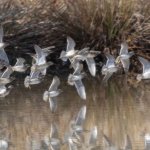The Action Plan for the Conservation of Migratory Shorebirds in Ecuador (PACAPME) is currently being implemented. It seeks to coordinate conservation actions for these birds and their critical ecosystems in the country by managing a network of priority sites. In Ecuador, 68 sites of biological importance for shorebirds have been identified. Nine of these sites meet the selection criteria to become WHSRN sites. To date, three of them have been declared: Isla Corazón y Fragata Wildlife Refuge, ECUASAL Artificial Pools, and Jambelí Channel.
The Ministry of Environment, Water and Ecological Transition, together with the NGO Aves y Conservación, convened two working sessions to advance the implementation of the Plan in priority sites. The meeting was held in the city of Salinas (Santa Elena Province) on June 25-26 and was facilitated by the WHSRN Executive Office. Administrators and managers of the nine Protected Areas of most significant importance for shorebirds in Ecuador were invited, as well as representatives from the Biodiversity Directorate, the Protected Areas Directorate, other NGOs, and members of universities.
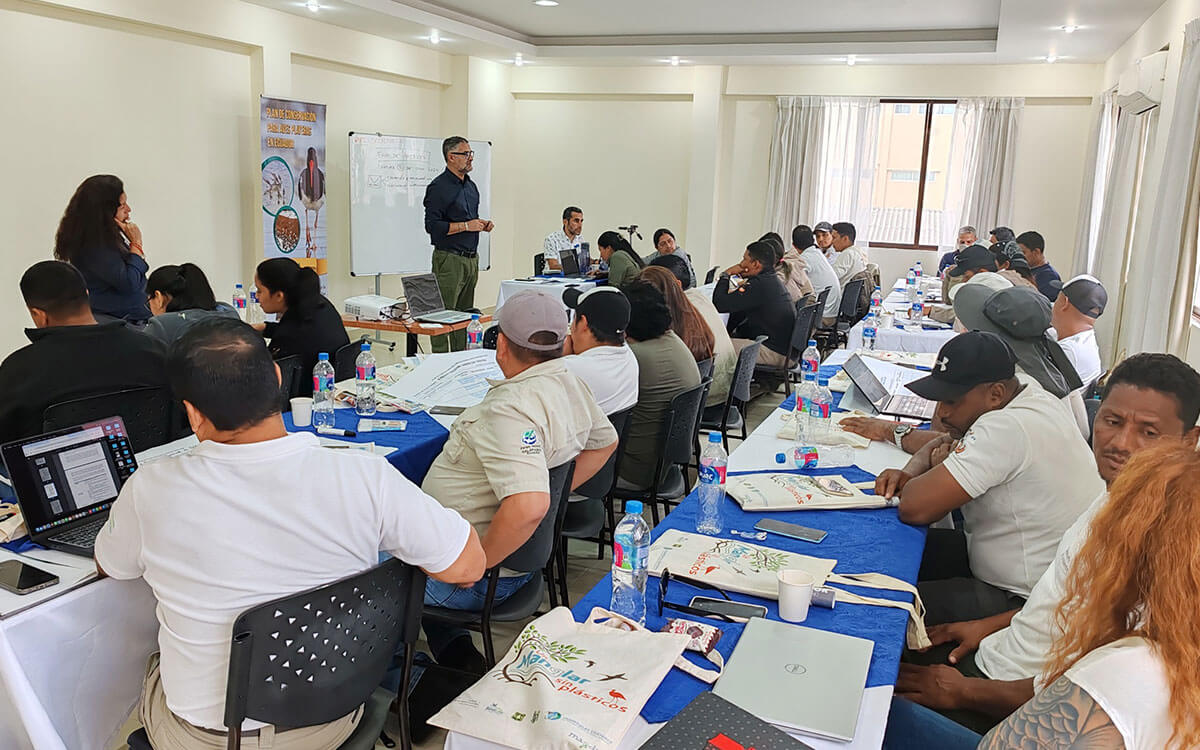
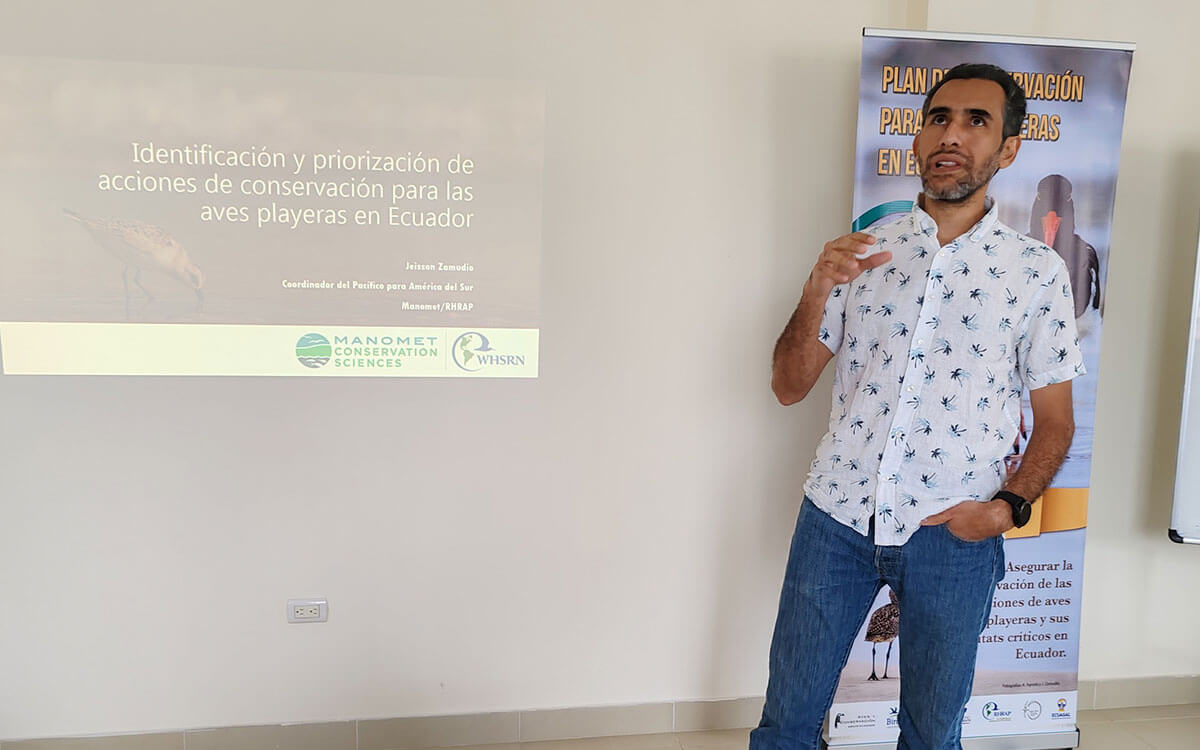
Thirty-two people participated in the workshops for the Action Plan for the Conservation of Migratory Shorebirds in Ecuador (PACAPME). Photos: Aves y Conservación Ecuador
During the first day of work, the objectives, strategy, lines of action, and activities of PACAPME were reviewed; the main advances in execution were presented, and through presentations by specialists, access to information on topics such as Good Governance and Planning of Protected Areas was facilitated. In addition, the administrators and managers of each Protected Area carried out an identification and prioritization exercise, preparing matrices of priority actions to be implemented during 2024-2028 in each of the nine Protected Areas. Danny Guarderas, Specialist of the National Biodiversity Directorate of the Ministry of Environment, Water and Ecological Transition of Ecuador, said that “the work sessions held in Salinas have allowed us to strengthen the capacities of the staff of our Protected Areas and plan possible actions to implement at the scale of important sites over the next four years, to advance compliance with the PACAPME”.
The second day of work reviewed aspects related to institutional coordination and updates on forming the National Working Group for the Conservation of Migratory Shorebirds (GNT-AP), whose function is to provide strategic guidance for implementing PACAPME. Priorities and opportunities for implementation were also discussed, as well as possible collaborative work among the nine areas.
The agenda of activities also included a visit to the ECUASAL Artificial Pools WHSRN site, dedicated to industrial salt production, which regularly receives 23 species of Nearctic migratory shorebirds, including large concentrations of Wilson’s Phalaropes (Phalaropus tricolor), with up to 60,000 individuals recorded.
Thirty-two people participated in the workshops in Ecuador, which were supported by the Copper River International Migratory Bird Initiative (CRIMBI), the U.S. Forest Service, and the U.S. Fish and Wildlife Service’s Neotropical Migratory Bird Conservation Act (NMBCA). The Protected Areas convened were: Churute Mangrove Ecological Reserve, Corazon and Fragata Island Wildlife Refuge, El Morro Mangrove Wildlife Refuge, Cayapas Mataje Mangrove Ecological Reserve, Muisne and Cojimíes Mangrove Wildlife Refuge, Playas Villamil National Recreation Area, Galapagos National Park, Antisana National Park, and Cayambe Coca National Park.
For more information on PACAPME and its implementation, contact Ana Agreda, Secretary of the GNT-AP: aagreda@avesconservacion.org

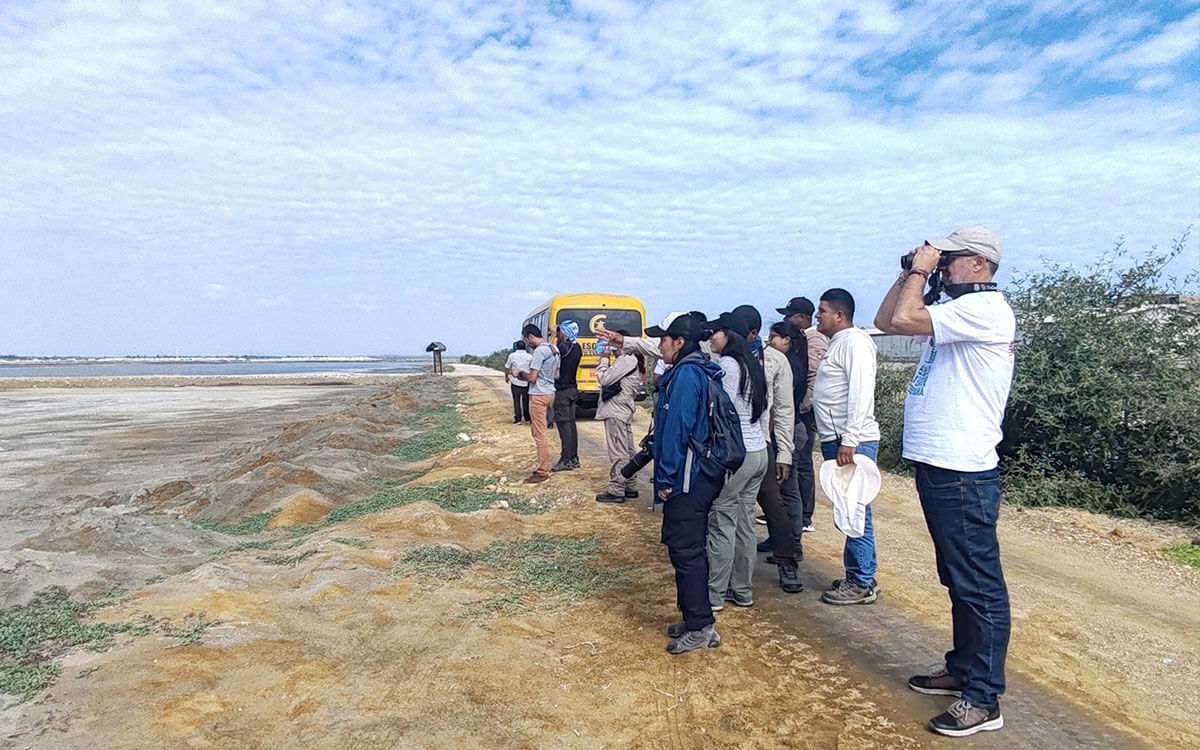
Left: The mural is part of Ecuasal’s Communication Plan, which seeks to increase the local and national community’s awareness of the importance of the Ecuasal Pools and their migratory birds. Right: Participants looking for shorebirds at Ecuasal Pools WHSRN Site. Photos: Aves y Conservación Ecuador
Cover Photo: A flock of Semipalmated Sandpiper. Photo: Aves y Conservación Ecuador.




